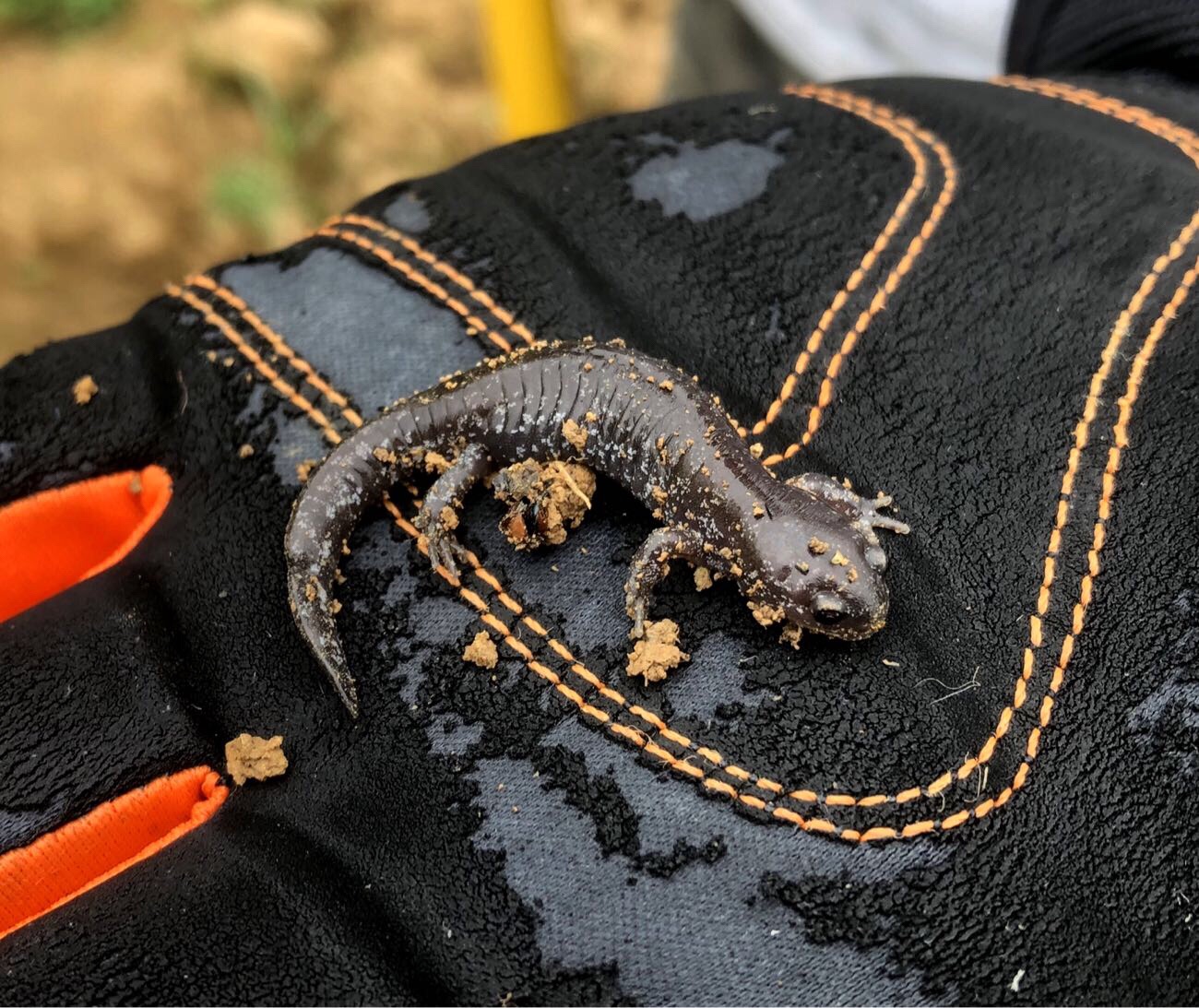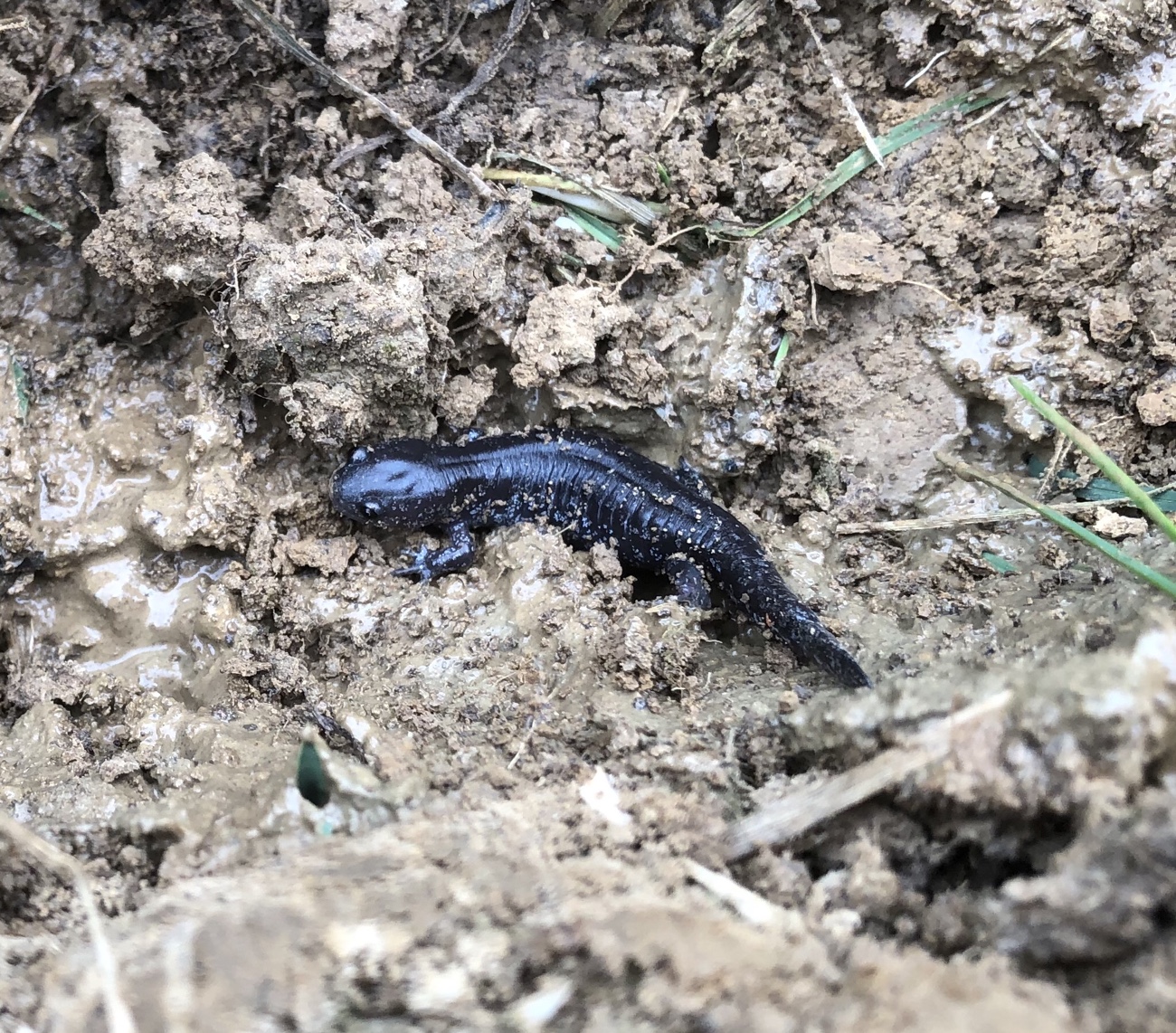
It seems as though something new is waiting to be discovered here each day. If I forget to bring my phone with me when I head outside – to do chores, projects, or foraging – I often regret it. Not today, though!
Mosquitoes can be a problem out here, especially when it’s warm and wet, as it’s been frequently lately. Any standing water, including in plant saucers, pots, and puddles, are an invitation for mosquitoes to lay their eggs. The telltale sign is the wriggling, squiggling, oddly shrimp-like larvae that hatch in those standing water areas.
Where the pigs’ previous paddocks had been, wallows had baked hard in the sun and filled with rainwater from recent storms: perfect mosquito-breeding basins. I spotted some of the larvae moving around in there and knew we needed to address the wet areas before they hatched into bloodthirsty flying vampires. With a long-handled cultivator tool, we began filling in some of the depressions. At one, a frog jumped away from the tiny pond; just a puddle seems to be enough to encourage frogs to visit.
As we moved to more recently-turned areas, a clump of clay was moved and something shiny and dark was unearthed. A big worm or perhaps a millipede? A closer look revealed a very small (~3.5″ long) salamander. We very gently picked it up to capture a few shots, and I thought I saw it stick out its tongue…only to realize that it was actually in the process of swallowing some kind of worm. As I fumbled to get my gloves off and take a photo, it swallowed the worm.
We raked the dirt back into the puddles and placed the diminutive salamander back in a moist area. I’d already been thinking about digging a small, shallow pond somewhere on the property, and am even more motivated now, knowing that it will attract and encourage frogs, salamanders, turtles, and other wildlife to take up residence as part of a healthy ecosystem.

In the meantime, we’ll be on the lookout for salamanders at standing puddles. And, salamanders (and frogs), feel free to eat all the worms, slugs, and pests you’d like – and tell your friends!
Find more about the Smallmouth Salamander here.
